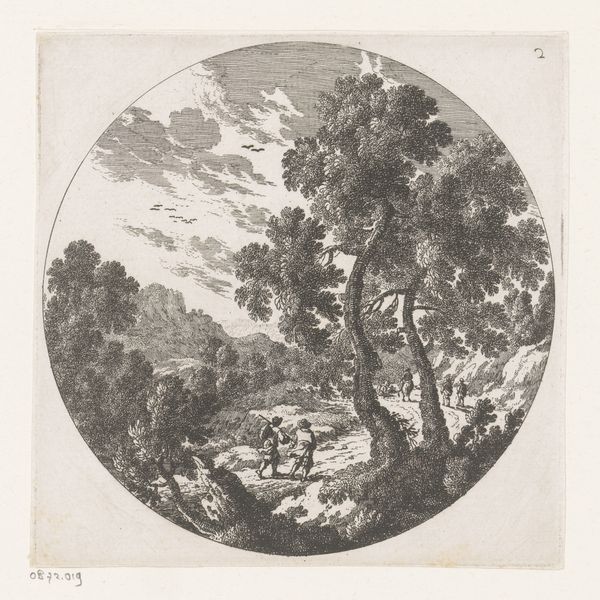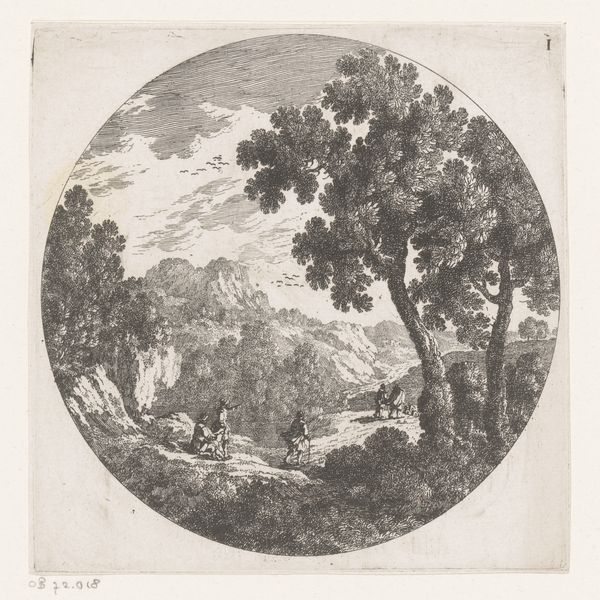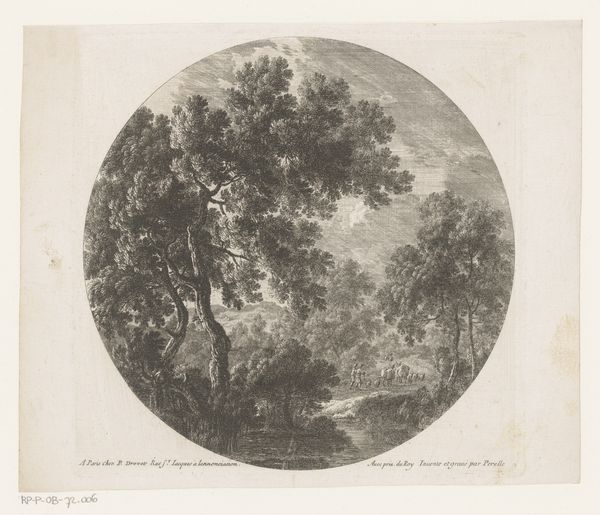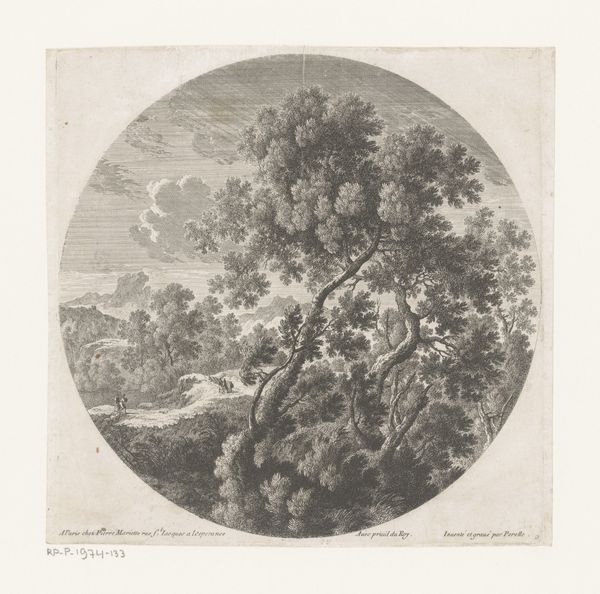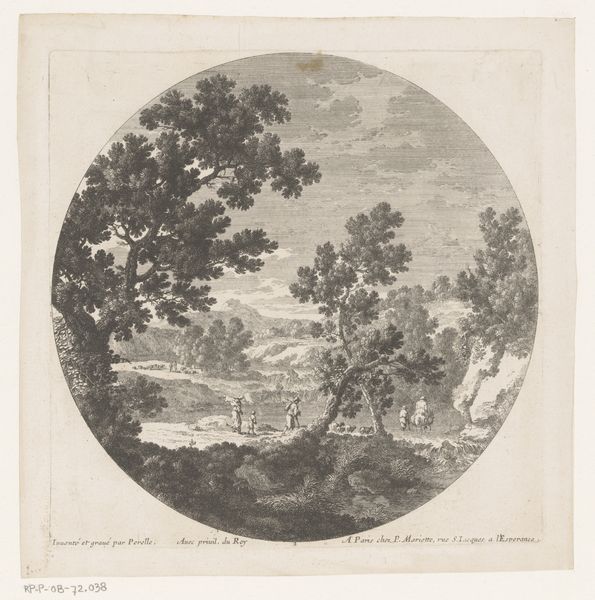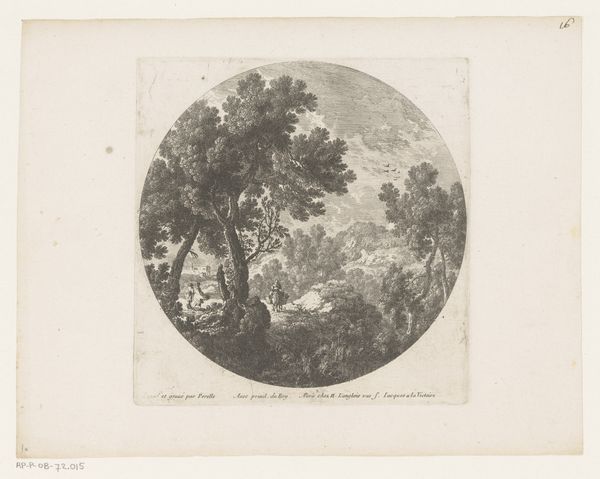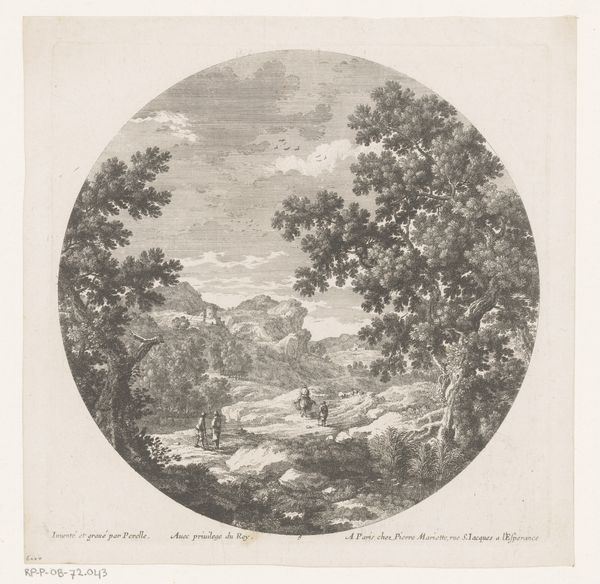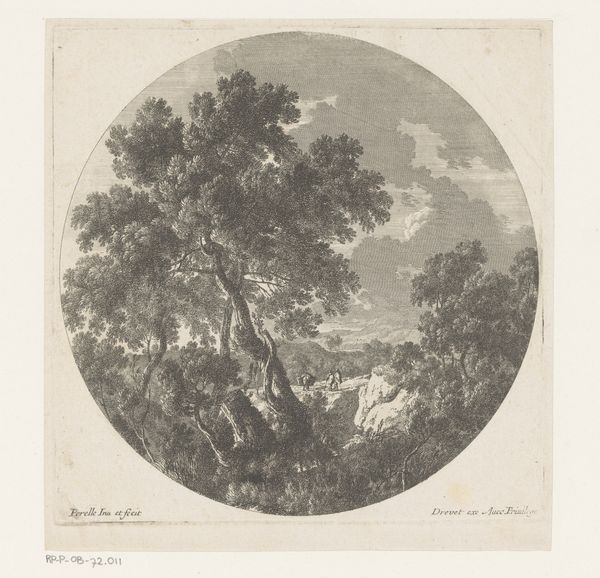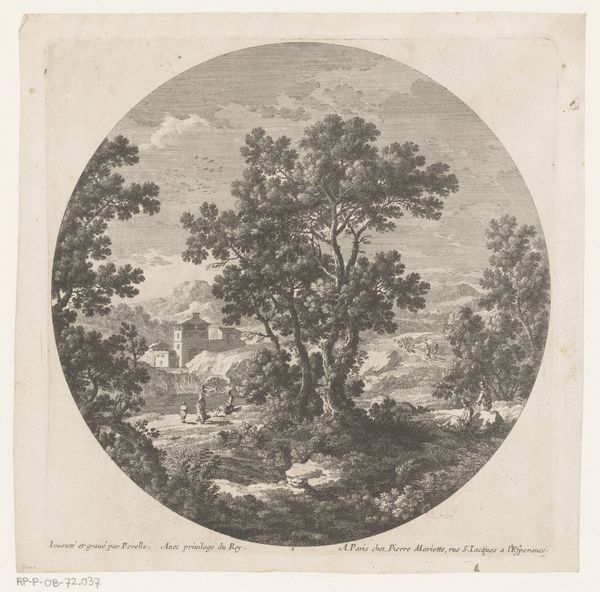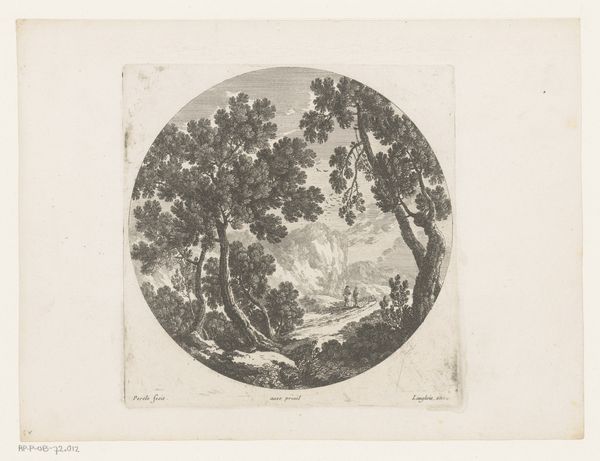
drawing, print, engraving
#
tree
#
drawing
#
baroque
# print
#
old engraving style
#
landscape
#
mountain
#
line
#
engraving
#
realism
Dimensions: height 125 mm, width 123 mm
Copyright: Rijks Museum: Open Domain
Curator: Welcome! We’re standing before Nicolas Perelle's "Heuvelachtig landschap met bomen", a landscape drawing produced sometime between 1613 and 1695. It’s a stunning example of the artist’s engagement with naturalistic themes through the engraving technique. Editor: Its circular composition immediately evokes a sense of wholeness and containment. The stark contrasts in the linework, from delicate hatching to bold strokes, add a captivating dynamism. Curator: Absolutely, and in engaging with broader social narratives of the period, this work, particularly through its attention to pastoral landscapes, could be seen as a form of idealized escapism, an attempt to grapple with the societal tumult and transformation brought about by religious conflict and the rise of absolutist power. How does it align, perhaps subconsciously, with a yearning for stability? Editor: I see your point. But it's hard to ignore the intrinsic qualities of the art first— the way the lines define form, creating a clear hierarchy in the pictorial space. Note the almost scientific accuracy in how different types of vegetation are rendered with contrasting stroke. Semiotics allow one to decode its representational language. Curator: Yes, and further exploring the interplay between nature and humanity that landscape art represents opens up questions regarding resource management, agrarian class structure, and perhaps even colonialism. I see the figure almost as an observer of the "ideal state," looking out. What class is he? What are his plans? How does it relate to systems of power at play during this era? Editor: You immediately jump to external relations. How can we move beyond such rigid constraints and address elements such as repetition, patterns, rhythm, light, and dark which generate structural and visual harmony, that I might describe as serene? It makes this Baroque landscape all its own. Curator: Well, isn’t it our duty to recognize these artworks in relation to everything, including society’s forgotten voices? Perelle does leave us clues, though. Editor: I appreciate your perspective, and by thinking in this critical manner, the work grows more. Thank you for sharing. Curator: My pleasure. It's essential to explore art's multifaceted role in the world, its reflection, its creation of change and engagement of society as a whole.
Comments
No comments
Be the first to comment and join the conversation on the ultimate creative platform.


